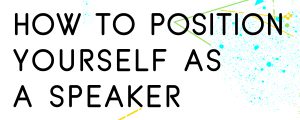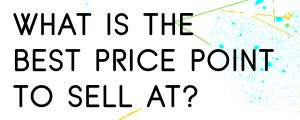Whether you want to make money online or offline, there's no denying that presenting at live events or online webinars is a big money maker.
This week we're giving you a full, end to end strategy on how to fill a room full of people, pack out your webinar, deliver the goods with powerful presentations and make an absolute fortune!
Our own Rob & Kennedy have actually learned a lot from this weeks guest Dave Dee, and would even go as far as to say that Dave actually inspired them to start their marketing journey!
Ready, set, go…

- The most important thing to realise is the type of speaking that I do and teach others to do, is to actually sell their product/service/idea from the stage or via a webinar.
- This is called ‘one to many selling’.
- It’s slightly different to getting up on stage and motivating people or getting an applause, that’s usually pretty easy to do. To get up and sell is a whole different ball game.
- I hold my own events/webinars and also speak at a lot of other people’s events/webinars. What’s nice about speaking at other people’s events is that they’ve already gathered an audience for you, so not only can you make a lot of money but you’re also acquiring customers at a huge profit.
- Listen to the full episode to hear one of Dave’s amazing success stories.

- Typically, I don’t want a fee, I want to get the sales.
- The way that works, when you go and speak at someone else’s event, is almost none of the speaker you see (other than the celeb speaker) are getting paid a fee.
- You usually get 50% of the sales you make, and the host will get the other 50% of the sales.
- You might be wondering why you would give away 50% of your sales, it’s because they’ve assembled an audience for you that you just wouldn’t be able to assemble on your own.
- It’s sort of like an offline affiliate commission.

- It’s like anything else, if you have a book or publication that establishes you, but a lot of it is about having a strong online presence.
- I send daily emails to my entire email list, so I’m constantly talking to people and I’m always in front of them.
- I also blog to multiple mastermind groups of high-powered business owners, and I get a lot of speaking gigs from that.
- The real question is how you get the audience to consider you an expert, someone who they want to listen to and get information from.
- A lot of that has to do with how the promoter of the event positions you, therefore you need to tell them how you want to be seen. Give them an introduction for yourself rather than letting them do it for you.

- Well, it’s pretty tough to beat this kind of thing in terms of profitability. I’ve had days where I’ve gone to an event and made $100,000 in sales.
- It may not be that scalable in terms of travel and time, but it certainly beats selling a $47 e-book.
- What you really need to understand is that it’s a way of getting customers. Once you have that customer you can put them into various different programmes and campaigns and continue selling that way.
- It’s also super scalable if it’s online. So, if you can take your presentation and put it online then you can literally put it on auto-pilot and it will keep making you money.
- The most important thing is to create a presentation that persuades and sells.

Close
- The first thing you have to do is to begin with the end in mind. So, you need to determine exactly what your irresistible offer is first.
- Before I even start creating the presentation I create the order form, whether it’s a print order form or an online order form.
- Now that you know what you’re selling, you should create your close.
- Most people do the complete opposite. But you don’t want to do that. Why? Well, when you’re creating a presentation to sell, everything that you say/teach/do should lead to the close. It should be a set up for the close.
- Now that you’ve created your close you know where you want to get, now you need to decide how you’re going to get there.
Opening
- Now you can loop around and start back at the beginning of your presentation.
- The first thing you want to do in your opening is to grab your audience, get their attention immediately.
- If you don’t do this, online people will just leave the webinar, in person they will just mentally check out and stop listening.
- The best way to grab the attention of your audience is to say: In the next [TIME] minutes, I’m going to teach you a 1-2-3 step by step strategy for [BIG OUTCOME] without having to [OBSTACLE].
Core Story
- The other thing that your opening needs to accomplish is to let people know why they should be listening to you, what it is that makes you the expert. This is where you need to tell your core story.
- The best core stories have to in some way relate to the audience. You need to find a struggle or obstacle that you’ve faced or overcome that you know the audience will relate with.
Objections
- Next, you want to think about objection handling. If you can predict the objection people are going to have and tackle them in your presentation, then you’re going to avoid doing that later.
- A great strategy for subliminal objection handling is answering objection in your core story. I know that there are always going to be people in the audience who maybe think they can’t spend the money it costs for your product/service.
- The way I handle that is during my core story I tell a story about a time I was in an audience and I was thinking that I didn’t think I could afford the programme, then I recall something that the late Jim Rohn said ‘the successful people invest in themselves and their education’, at that point I knew that I had to go ahead and invest in the programme even though I didn’t think I could afford it.
- The secret to this is that I’ve just planted the answer to the ‘it costs too much’ objection in the audience’s mind before they even have that objection. So, when I get to the end of the presentation and reveal the price, they automatically think back to my story.
Teaching
- This is where almost everybody screws up – they actually do real teaching.
- Our point here is to sell our product and if you over-teach during your presentation then people will think that they have all the information they need and not buy the product, when in fact they don’t have all the information they need and will just walk away with half the story.
- The best way to structure the teaching portion of your presentation is to have 3 major chunks/topics that you’re going to talk about. (All of these topics should create the desire for the thing you sell at the end.)
- Under each of the 3 chunks you follow the same format:
- Introduce the big topic, talk about why it’s really important that they understand this big thing, you then tell them what to do but not how to do it or you want to give them useful but incomplete information.
- Listen to the full episode for full examples.
- Then you want to give a case study or testimonial that is going to prove the thing you just talked about.
- After that, you transition into the next teaching chunk until you have all 3.

- I would say that if you’re selling a high-priced product/service, it’s really hard to sell something high-priced in less than 75 minutes.
- Content – 1 hour
- Close – 15 minutes
- The big mistake that a lot of people make is that they rush through their close, but the close is really the whole deal. The close is where you’re going to make your money.
- So, if you’re going to cut out anything you want to just make your content shorter.

- Typically, I won’t sell anything under $997, but my typical price point from the stage is $1,997.
- The reason for this is I’m splitting it with the promoter, so you have to keep in mind that you’ll be giving away a percentage of your sales.
- So, if you sell at a low price point it might not be worth your time/travel expenses ultimately.


A book that you would recommend…
Anything by Jim Rohn – he was Tony Robbins’ mentor and everything he publishes is great, really powerful.
What is your top success habit?
My morning routine. I get up early and do some yoga and reading, then I get straight into writing my daily email.
Who do you look up to?
I have a number of mentors and I look up to all of them. Dan Kennedy is my marketing mentor and friend of mine Rob Berkley teaches how to lay out your life and business plans.
How do you define success?
Doing what you love to do, making the money that you want to make while having the lifestyle that you want to have.
Here the big one…who do you like more, Rob or Kennedy?
I think Kennedy’s hair is my favourite!
Finally, where can folks go to find out more about you?
You can head to davedee.com and you can even pick up a FREE presentation walkthrough download!




Leave a Comment